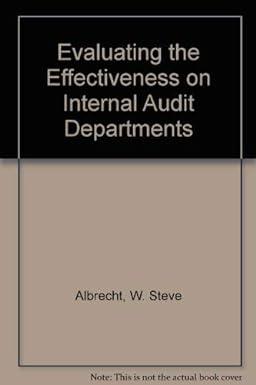
RA20.2 Real World Emphasis Finance Canadian National Railway Company and Cana- dian Pacific Railway Limited The accounting for operating leases has been a controversial issue. Many observers argue that firms that use operating leases are using significantly more assets and are more highly leveraged than their financial statements indicate. As a result, analysts often use footnote disclosures to reconstruct and then capitalize operating lease obligations. One way to do this is to increase a firm's assets and liabilities by the PV of all of its future minimum operating lease rental payments. 20-88 CHAPTER 20 Leases Instructions Go to the SEDAR website (www.sedar.com) or the websites of the companies and access the financial statements of Canadian National Railway Company (CNR) and Canadian Pacific Railway Lim- ited (CPR) for their years ended December 31, 2017. Note that both companies' financial statements are prepared in accordance with U.S. GAAP, which in 2017 was very similar to current ASPE standards. Refer to the financial statements and notes to the financial statements and answer the following questions. a. Identify all lease arrangements that are indicated in each company's financial statements and notes. For each lease arrangement, give the title and balances of the related lease accounts that are in- cluded in the financial statements. b. What are the terms of these leases? c. What amount did each company report as its future minimum annual rental commitments under capital leases? Under operating leases? Are there significant differences between the two companies and the way they provide for their physical operating capacity, or are they basically similar? d. Calculate the debt to total assets ratio for each company at December 31, 2017. e. If provisions similar to IFRS 16 were adopted by both companies effective December 31, 2017, what would the effect be on the companies' debt to total assets ratios? Where necessary, estimate the im- pact on the statement of financial position assuming 6% is the borrowing rate implied in the leases and end-of-year cash flows. What information is missing from the companies' notes to make a more accurate calculation of the effect of adopting this approach? f. Recalculate the ratios in part (d), incorporating the adjustments made in part (e). Comment on your results. g. What do you believe are the advantages of adopting the contract-based approach of IFRS 16 Leases when trying to compare companies? Relate your discussion to your analysis above for CNR and CPR. RA20.2 Real World Emphasis Finance Canadian National Railway Company and Cana- dian Pacific Railway Limited The accounting for operating leases has been a controversial issue. Many observers argue that firms that use operating leases are using significantly more assets and are more highly leveraged than their financial statements indicate. As a result, analysts often use footnote disclosures to reconstruct and then capitalize operating lease obligations. One way to do this is to increase a firm's assets and liabilities by the PV of all of its future minimum operating lease rental payments. 20-88 CHAPTER 20 Leases Instructions Go to the SEDAR website (www.sedar.com) or the websites of the companies and access the financial statements of Canadian National Railway Company (CNR) and Canadian Pacific Railway Lim- ited (CPR) for their years ended December 31, 2017. Note that both companies' financial statements are prepared in accordance with U.S. GAAP, which in 2017 was very similar to current ASPE standards. Refer to the financial statements and notes to the financial statements and answer the following questions. a. Identify all lease arrangements that are indicated in each company's financial statements and notes. For each lease arrangement, give the title and balances of the related lease accounts that are in- cluded in the financial statements. b. What are the terms of these leases? c. What amount did each company report as its future minimum annual rental commitments under capital leases? Under operating leases? Are there significant differences between the two companies and the way they provide for their physical operating capacity, or are they basically similar? d. Calculate the debt to total assets ratio for each company at December 31, 2017. e. If provisions similar to IFRS 16 were adopted by both companies effective December 31, 2017, what would the effect be on the companies' debt to total assets ratios? Where necessary, estimate the im- pact on the statement of financial position assuming 6% is the borrowing rate implied in the leases and end-of-year cash flows. What information is missing from the companies' notes to make a more accurate calculation of the effect of adopting this approach? f. Recalculate the ratios in part (d), incorporating the adjustments made in part (e). Comment on your results. g. What do you believe are the advantages of adopting the contract-based approach of IFRS 16 Leases when trying to compare companies? Relate your discussion to your analysis above for CNR and CPR







